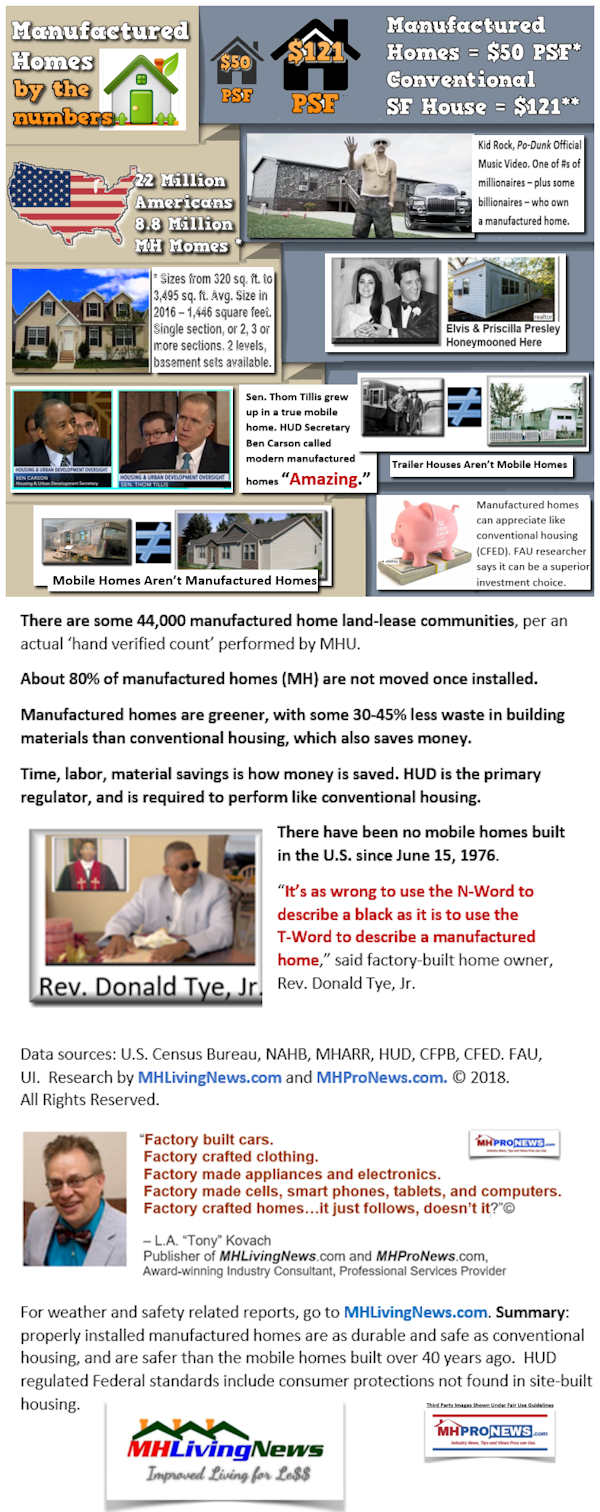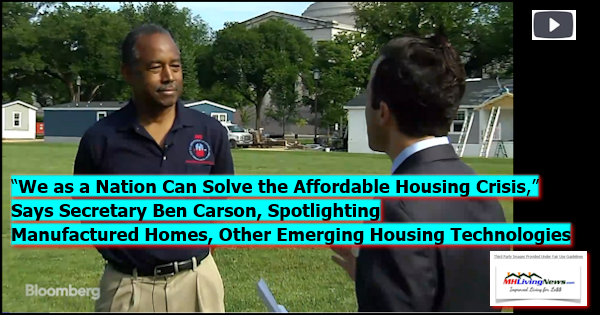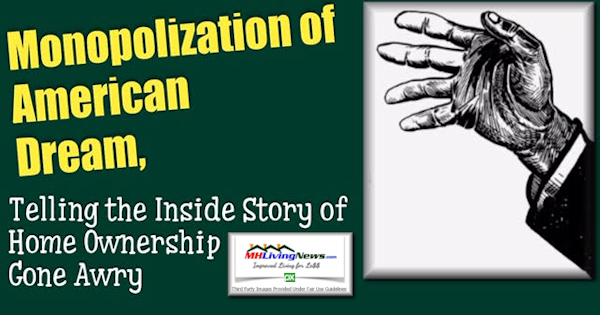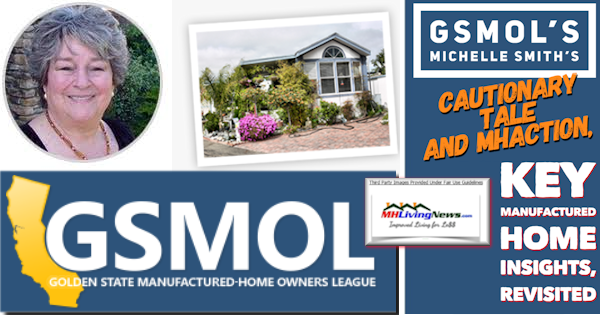The following is from Pissed Consumers at this link here and is republished with their permission. The illustrations are added by MHProNews, unless otherwise shown. Note that some 40 million visits a year occur at Pissed Consumers, per their home page data.

The Home Construction Industry is very popular among consumers on our review platform. People leave their opinion and talk about their experience with modern housing while also seeking help and expert advice. As we see, consumers have lots of concerns about manufactured homes. So, we thought it would be great to provide you with credible expertise.
So, what is a manufactured home? How much does it cost? Is it better than a conventional house?
We’ve invited Tony Kovach to record a series of video interviews to cover all manufactured homes FAQs. Tony is one of the key experts in the Manufactured Homes Industry with over 25 years of experience in the business. In this first video interview, he explains the basics that you should know about manufactured houses.
Watch the video and follow up with an article to find answers to top consumer questions about manufactured homes:
- Why choose manufactured housing?
- What is a manufactured home?
- Manufactured homes vs. mobile and conventional homes
- Manufactured homes life expectancy
- Manufactured homes cost
- Manufactured homes sizes
- Better understanding of the manufactured homes industry
- Wrapping up
— What follows is a transcript and the topics covered in the video interview. —
Why Choose Manufactured Housing?
Tony Kovach: Here in the United States, there are about 22 million Americans who live in either a mobile home or a manufactured home, and this was a couple of decades ago. So it’s even more relevant today than now.
A manufactured home built to these modern standards is going to have the same kind of life expectancy as conventional homes. The federal government hires experts, they come into the factories, they’re inspecting those homes.
Even though it’s less expensive, you’re not sacrificing consumer protection. Actually, you’re getting more than most site-built houses.
Michael Podolsky: My name is Michael Podolsky. I’m one of the co-founders at Pissed Consumer and we’ve been in business for the past 13 years. We get a lot of interest from our viewers and listeners to our site and our posters about manufacturing home as an industry.
Tony Kovach, that I’ve met, is a specialist in the area. I’ll let Tony speak to that and explain his credentials on that effect. And we have chosen to create a series of videos that will talk about home construction, specifically manufactured homes, and how we differentiate with other housing possibilities, for today’s consumer.
Tony: Michael, thanks for inviting me to do the interview. I’ve been in the manufactured home industry for over 25 years. Years before some of the mainstream media reports that millionaires and a couple of billionaires lived in manufactured homes.
I’ve personally owned and lived in manufactured homes, as well as one mobile home. And I’ve lived in conventional housing, anything from tiny house sized studios, to regular apartments, conventional construction in nice neighborhoods. Brand new homes and what have you. So I can say from firsthand experience that you cook, clean, eat, live, and love the same in a manufactured home as you would in other types of conventionally built housing.
Our videos and our articles have been cited by the Consumer Financial Protection Bureau or CFPB, National Association of Realtors, university-level research, mainstream news reports, and the congressional record.
So as Al Cole, a senior vice president at Oxford Bank said, I’ve worked with factories, associations, finance companies, communities, and retail. The whole gamut, really of the industry. So we have friends and foes like any other professional.
But the reason we have the kind of engagement that we do, is people find this credible.
And therefore, they’re happy to come and visit us several million times a year.
What Is a Manufactured Home?
Michael: What is a manufactured home, tell us, please?
Tony: Great question. A manufactured home is a form of factory-built housing. So think about it, your cell or your car, your clothing, transportation, appliances. Many of the things we as consumers buy and use, they all come up from our factory or a production center.
In Japan or Europe or other nations, factory-built housing is actually increasing in the marketplace. Here in the United States, there are about 22 million Americans who live in either a mobile home or a manufactured home. So manufactured homes are the most popular type of factory-built housing, in terms of the number of homes being purchased.
Manufactured Homes vs Mobile House vs Regular Homes
Michael Podolsky: What is the difference? Is there a difference between manufactured home, regular home, and model home that you can point to a consumer?
Tony: That’s a good question. Let me start first with the difference between manufactured homes and mobile homes. Then we’ll get to the difference between a manufactured home and conventional housing.
So first of all, there is a difference between a mobile home and a manufactured home. It’s not just marketing or industry lingo. There are reasons for the terminology, so a little history is helpful.
If you can go back in time, trailer houses merged from the RV industry in the 1930s.
By the 1950s, mobile homes emerged. They were bigger, heavier, you had to have specialized equipment to move them.
By the 1970s, you started getting into the manufactured housing era. So if you have something that’s built on or after June 15th in 1976, and it has a red seal, like we’re going to show you, that’s going to be a HUD Code manufactured home.
And those homes are also going to have this data plate.
And what that means is, the home is specifically certified, Michael, to meet certain snow loads, wind zone, insulation, and other construction standards. And you won’t find that data plate or that red label on the back of a mobile home.
Most people today, when they think of a conventional house, they think of a home built on a slab foundation, because that’s how most new houses were built. But if you go back in time, Michael, homes built 40, 50, 60 years ago, for example, a lot of those were built over a crawl space.
So that’s what you’re going to see with the manufactured home. You can have one, that’s what they call ground set, that costs a little bit more money.

But typically what you have is one that you take two or three steps up, get on the porch, and then you walk into the home. And those are going to have some foundation enclosures or what some people call skirting. But basically, it’ll be vinyl or brick or some other kind of material like a hardy board, that kind of thing.
So it’s just good to know that there’s been millions and millions of conventional houses that have been built like that over a crawl space. And that’s how the manufactured homes are going to be built.
Manufactured Home VS Conventional House: Technical Differences
Tony: Now to get to the technical difference between a manufactured home and a conventional house. A manufactured home has to be built to this federal building code that we were talking about. In a conventional build house, that’s going to be built to a local or state building code.
We’ve got a quote here from Steve Duke and an attorney from the Louisiana Manufactured Housing Association. And he said this, and it makes perfect sense. The terminology matters, because the terminology determines the construction standards that a home is built to.
So a manufactured home is built to what they call a performance code. And that’s been established by the federal government for consumer safety, energy savings, durability factors like that.
A conventional house is routinely built to what they call prescriptive building standards. So that’s how many nails, how many screws, what weight shingles, so on and so forth. So with the manufactured home, it has to perform the same as a conventional house, but technically it doesn’t have to have the same kind of materials, usually, it does. But someday they may come up with an innovation that doesn’t use the same kind of stud as a conventional house, for instance.
So Mark Weiss, the president of the manufactured housing association of regulatory reform, describes it this way. The HUD Code manufactured home is affordable housing, built in a controlled environment to federal performance-based construction standards. That means in a practical sense, that the federal standards are designed so that a manufactured home meets the highest quality, safety, and durability standards.
How Long Do Manufactured Homes Last?
Michael: Do manufactured homes last long? What is the life expectancy of a manufactured home, if it is to be compared to conventional housing?
Tony: That’s an important question. And actually what you’re going to see if you dig into some of the research. There’ve been studies done by Harvard University and Iowa State University and they looked at these specific questions, Michael. And what those guys did is determined, and this was a couple of decades ago. So it’s even more relevant today than now. A manufactured home built to these modern standards is going to have the same kind of life expectancy as conventional homes.
The one thing I like to tell consumers though, Michael, is this. It’s important on any kind of housing, whether it’s conventional or manufactured, you want to make sure that you’re doing your proper maintenance. If you’re doing the proper maintenance, then the life expectancy is going to be very comparable.
How Much Does Manufactured Home Cost?
Michael: What about costs? So what about manufacturer homes? Shall I expect the cost savings to be passed on to the consumer? And that’s why it would be important for consumers to take a look at the pricing and the availability of manufactured homes?
Tony: That’s a really good tee up, Michael. Let me give you a couple of points to answer your question and dig a little bit deeper on what we talked about before. First of all, you’re right.
Typically, a manufactured home, apples to apples. So if you have the same kind of features in a conventional house or a manufactured house, typical savings is going to be about a third to a half over conventional housing.

You’re also going to have a greener home and what I mean by that, the construction process has less wasted materials. It’s one of the reasons why the cost is less. Another reason why the cost is less is frankly labor costs. When you can do something inside of a factory, you don’t have the interruptions caused by the weather. All the building materials can be scheduled to be there and so on.

So what you end up with, is a home that’s got A, two kinds of supervision. So besides the factory supervisors, the factory inspection with the HUD Code manufactured home. You also have third party inspectors that they’re required to come into the plant and make sure that those homes are being built to those federal standards. So this isn’t like an honor system. The federal government hires experts, they come into the factories, they’re inspecting those homes.

Another thing that’s interesting, even though you’re getting a house for less, for the reasons we talked about. The updated standards that were put into effect after the year 2000, there was a dispute resolution process that was established for consumers.
So one, if let’s say that you have a warranty issue, and of course, any new homes got a warranty. The warranty will vary depending on what part of the home you’re talking about. But it’s generally going to be from one year to several years, depending on what feature you’re looking at.
Besides the warranty, the installation is also covered. So if for any reason, a consumer has a problem. Let’s say the retailer didn’t have a good subcontractor to do the installation, I’m just picking an example. Then if you don’t get satisfaction from the retailer or the installer, HUD has this dispute resolution process and basically what that means is this. That you can contact that HUD dispute resolution process and they will step in and they will make sure that a third party comes in. They’ll look the situation over and they’re there to advocate for fairness for the consumer. As well as fairness for the installer or the retailer, to make sure that someone’s not making an unreasonable demand.
So it’s tremendous peace of mind and to give you ideas. And not to say that these homes are perfect, I never want to give somebody that impression. But according to a federal official that I spoke with, less than one quarter of 1% of all new HUD-Code manufactured homes ever go to dispute resolution.
That means that 99.75% of manufactured homes aren’t handled through dispute resolution. Whatever warranty or things like that come up, are typically handled between the retailer, the installer, the factory, and the consumer. So even though it’s less expensive, you’re not sacrificing consumer protection, actually, you’re getting more than most site-built houses.
What Are the Sizes of Manufactured Homes?
Michael: What is the largest manufacturer home, as far as square footage is concerned, that was ever manufactured in the factory?
Tony: That’s a fascinating question and I’d say this. Let me take it from the other side of the question and then we’ll go up. The smallest manufactured home is 320 square feet give or take. So about the size of a tiny house, a little bit bigger than some of the tiny houses that are out there. So now from that size, in a single section manufactured home, and you got single sections, you’ve got multi-section.
With a single section manufactured home, maybe the most common size you see in most parts of the country today, or what they call 16×80’s. That doesn’t mean that the house is actually 16 feet wide, it doesn’t mean that the house is actually 80 feet long, but that’s the shipping size of the home. So a 16×80 might be 15 feet, 4 inches by 76 feet floor size. So you can do the math, but roughly 1,120 square feet for that size home.
A multi-section home could be 2,200-2,400 square feet. But to be very honest, there are some things that some people never think about. You can have literally a second story with some

manufactured home[s].
You can have a manufactured home that’s built over a partial or full basement, in some parts of the country. Now for example, here in Florida, you don’t have basements under anything, but different parts of the country where you can have a basement.
If you wanted to, you could have a manufactured home built over a basement. So in terms of potential size, it would be very easy to have 3,000 or 4,000 square feet under roof in a HUD Code manufactured home, all things considered.
Why Manufactured Homes Are Not Better Understood and Utilized?
Michael: So being an expert in the industry, given the fact that it is less expensive, less costly, why such a low percentage of homes are manufactured homes? As an expert in the industry, why do you think it’s not sufficiently utilized by today’s consumer?
Tony: Michael, that’s maybe one of the best questions that a person can ask. I wasn’t expecting you to ask that, I’d love to do a separate video on that, but let me give you a quick tease for that.
Frankly, people in our own industry have done a lousy job of explaining those differences. On our MHLivingNews website, we have a resource called the ultimate third party research. And we’ve got literally dozens of third-party studies that have been done over the years, and they all demonstrate these facts that we’re talking about.
If you went to the Manufactured Housing Institute website, another trade association, and you looked at the reports that we have on MHLivingNews. And then you look to see if that same report would be on the MHI website. Unfortunately, a lot of those things just aren’t there.
So for whatever reason, we could talk about industry politics and things like that another time. But frankly, our industry has not done a good job of communicating that and so, even though I would say that maybe mainstream media has some level of responsibility. If the industry is not doing a good job, how can you blame the mainstream media very much for it? You know what I mean?
Wrapping up
Michael: Tony, I would like to conclude this first video. We’re going to have a second video. We’re going to talk about the process, about buying a manufactured home. That’s our next video and for our viewers, please continue watching this series. I and Tony are going to come back together and shoot the second video really soon.
This article is based on the first video from the interview series with Tony Kovach that we’d like to share with you. Here, we discussed the term manufactured home and its main difference from regular and mobile houses. We explained why manufactured housing cost less and why they are still underestimated by consumers.
In our next interview with Tony, we’ll cover tips that you might want to consider when buying a manufactured home.
##
The dialogue above are a good segue to the related reports linked below. The video below is with an actual manufactured home owner who brags how blown away his neighbors were by his home that was far lower in cost than their conventionally built houses where.
MHLivingNews looks forward to presenting the sequel to this video series with Pissed Consumer. “We Provide, You Decide.” © (Affordable housing, manufactured homes, lifestyle news, reports, fact-checks, analysis, and commentary. Third-party images or content are provided under fair use guidelines for media.)

(See Related Reports, further below. Text/image boxes often are hot-linked to other reports that can be access by clicking on them.)
By L.A. “Tony” Kovach – for MHLivingNews.com.
Tony earned a journalism scholarship and earned numerous awards in history and in manufactured housing. For example, he earned the prestigious Lottinville Award in history from the University of Oklahoma, where he studied history and business management. He’s a managing member and co-founder of LifeStyle Factory Homes, LLC, the parent company to MHProNews, and MHLivingNews.com. This article reflects the LLC’s and/or the writer’s position, and may or may not reflect the views of sponsors or supporters.
Connect on LinkedIn: http://www.linkedin.com/in/latonykovach
Related References:
The text/image boxes below are linked to other reports, which can be accessed by clicking on them.

National Home Ownership Month, Manufactured Home Financing Survey, Myths and Facts by Freddie Mac










 manufacturedhomelivingnews.com Manufactured Home Living News
manufacturedhomelivingnews.com Manufactured Home Living News






































